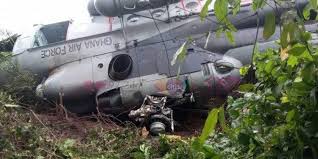
United Nations, August 1most serious and escalating threats posed by Islamic State (IS) and al-Qaida-affiliated groups are now concentrated in Africa, with Syria emerging once again as a strategic staging ground for international operations, according to a new report submitted to the U.N. Security Council by an expert monitoring team.
The 27-page report, circulated Wednesday, highlights the widening territorial control and increasing operational capacity of jihadist groups such as West Africa’s Jama’at Nasr al-Islam wal-Muslimin (JNIM) and East Africa’s al-Shabab, both linked to al-Qaida. The findings underscore a dramatic shift in global terrorism patterns, with the Sahel region now a central theater for extremist expansion.
Africa: A New Epicenter of Global Jihad
According to the report, JNIM has expanded significantly, operating with “relative freedom” across northern Mali and most of Burkina Faso. The Islamic State in the Greater Sahara (ISGS) is resurging as well, entrenching itself along the Niger-Nigeria border. Notably, JNIM has reached a new operational threshold, conducting complex, large-scale attacks involving drones, improvised explosive devices (IEDs), and coordinated assaults on military barracks.
Meanwhile, in East Africa, al-Shabab has intensified its campaign in southern and central Somalia, solidifying its relationship with Yemen’s Houthi rebels. U.N. experts revealed that weapons and training have been exchanged between the two groups — a concerning cross-regional alliance.
The report also notes a rise in attempted attacks on U.S. soil, many allegedly motivated by the Gaza-Israel conflict or influenced by IS propaganda. One of the deadliest incidents occurred on January 1 in New Orleans, where a U.S. citizen pledged to IS drove a vehicle into a crowd, killing 14 people the most lethal IS- or al-Qaida-linked attack in the U.S. since 2016.
Authorities also thwarted an ISIL-inspired mass shooting plot targeting a military base in Michigan, while IS’s Khorasan affiliate issued direct threats against American targets, underscoring the persistent risk of lone-wolf attacks fueled by online radicalization.
Syria: A Volatile Power Vacuum and a Terrorist Nexus
Syria, six months after the fall of President Bashar al-Assad, remains in a fragile transitional phase. According to U.N. analysts, more than 5,000 foreign terrorist fighters were involved in the offensive that led to Damascus’s capture on December 8. The country is now led by interim President Ahmad Al-Sharaa, former head of the rebel group Hayat Tahrir al-Sham (HTS), which previously had ties to al-Qaida.
While Al-Sharaa has pledged to transition Syria to a pluralistic democracy with fair elections, doubts persist over the presence of extremist elements in the new military leadership. The Syrian military reportedly appointed several senior figures from former armed factions, including six foreigners three of whom were granted brigadier general status whose ideological affiliations remain unclear.
Financing Terrorism: Adaptive and Decentralized
The report details how extremist networks continue to fund their operations despite increasing financial strain. With HTS taking control of key Syrian territories, IS revenues have declined sharply. Fighter salaries have dropped to \$50–\$70 per month, and family stipends to $35 the lowest ever recorded and no longer paid regularly.
To circumvent detection, IS has diversified its financial tactics. Female couriers and cloud-based hawala systems are now employed to transfer funds, along with “safe drop boxes” at money exchange points accessible only via code. The use of encrypted communication and social media has also facilitated radicalization and recruitment, especially by the Khorasan group, which remains a major threat to Europe and the Americas.
Strategic Shifts and Global Implications
The U.N. experts emphasized that the Islamic State’s continued pivot toward Africa stems in part from losses in the Middle East. The vacuum in regions like the Sahel has enabled jihadist groups to flourish amid weak state control and porous borders. Moreover, the resurgence of foreign fighters particularly those returning to Central Asia and Afghanistan poses significant risks for regional security.
Despite their territorial fragmentation, both IS and al-Qaida maintain a high capacity for propaganda, recruitment, and external operations. The report’s findings serve as a stark warning to the international community: the terrorist threat is evolving, decentralized, and increasingly embedded in regions struggling with governance, development, and conflict.
As counterterrorism efforts face new challenges in an increasingly complex global environment, the U.N. urges member states to maintain vigilance, cooperation, and strategic coordination to mitigate the threats emerging from Africa and Syria.








https://shorturl.fm/mNVV8